Engineering Services
- Engineering Analysis Overview
- Reverse Engineering
- Computational Fluid Dynamics
- Rotor Dynamic Analysis
- Stress Analysis
- Root Cause Analysis
- Pump Engineering Studies
- Engineered Upgrades
- Hydraulic Modifications
- Mechanical Upgrades
- Metallurgy
- Composite Materials
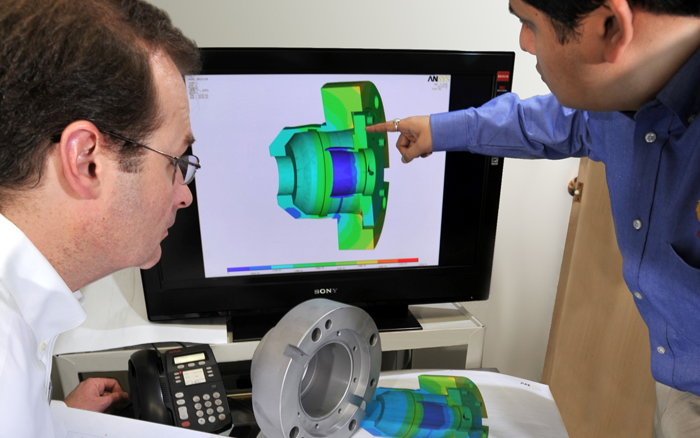
From its inception, Hydro has maintained a strong focus on engineering as an essential part of the repair process, providing hands-on engineering support in the field and on the shop floor.
As a result, Hydro has pioneered many specialized repair processes, reliability improvements and engineering upgrades. As an independent company, Hydro offers unbiased engineering analysis in each repair situation.
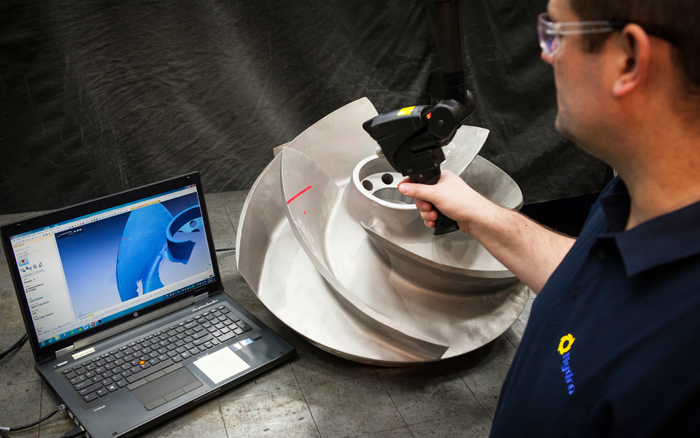
A Hydro Core Competency
Reverse engineering is the examination, testing and analysis of a component to define and document all of the parameters and critical attributes necessary to manufacture, repair or modify it. Dimensions, tolerances, surface finishes and fit or clearance to adjoining items, are determined. Hydro's process also includes an analysis of the chemical and physical properties of the material of construction as well as its hardness and residual stresses.
Reverse engineering is quite different from "replicating." We are not interested in just replicating the existing component as it is, but also in evaluating the failure modes and defining the critical characteristics required to minimize the possibility of failure in the newly manufactured piece. Engineering knowledge and experience is always an important part of the Hydro process.
While accuracy, thoroughness and technology are important elements of reverse engineering, it is Hydro's pump-specific engineering knowledge, understanding and experience that distinguish and define our process.
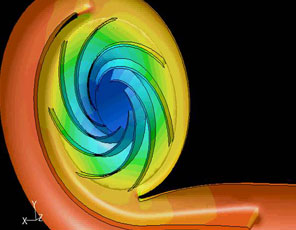
Hydro utilizes Computational Fluid Dynamics software to evaluate and predict flow patterns within a pump, allowing us to project performance under a given set of circumstances.
This tool provides the opportunity to test many variations in an effort to attain an optimal design before physical prototyping. CFD allows Hydro to not only evaluate more design alternatives and opportunities for performance improvement, but also offers a faster turnaround time.
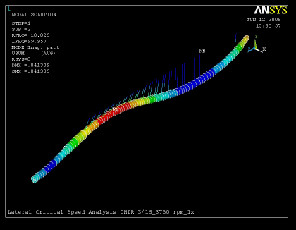
If a pump rotor is not properly balanced or if the running clearances are too open, the natural frequency of the rotor can match its running speed and create vibration. This phenomenon can create catastrophic failure in a multi-stage pump.
Rotor dynamic analysis can be performed on any pump rotor to determine the lateral and torsional critical speeds. This analysis in turn leads to harmonic analysis and transient analysis. Using this sophisticated software tool, Hydro can perform rotor dynamic analysis and recommend upgrades to increase the critical speed and reduce the vibration.
In addition to vibration created internally by the condition of the rotor itself, vibration can be created by the driver. If the torsional frequency of the driver matches the running speed of the rotor, there will be resonance and amplification of applied torques. Hydro can also perform transient torsional analysis of any pump rotor under different motor torque conditions. Such analysis can lead to recommendations to improve the factor of safety against shear.
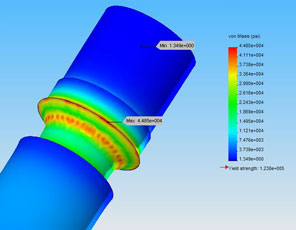
Stress analysis is an engineering discipline that determines the stress in materials and structures when subjected to specified static or dynamic forces or loads. It is performed to determine whether a structure can safely withstand the specified forces.
Hydro performs stress analysis of the pump pressure boundary components in accord with ASME guidelines. Stress analysis provides the data to optimize the structure or component against the forces being applied. In many cases it is found that bolt thickness and sizing is more than required and can be optimized by performing finite element analysis.
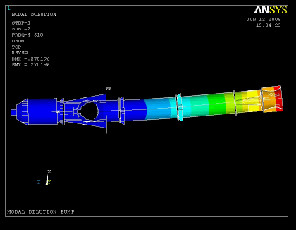
To identify root causes of pump problems, Hydro combines our very thorough and detailed inspection process with an evaluation of a pump's field operating conditions and maintenance history. This more in-depth approach can prevent costly forced outages by revealing latent conditions that may be causing repeated failures.
Hydro's engineering team has the knowledge and experience to analyze the existing problems and to recommend a quality solution based on sound engineering analysis and proven practices.
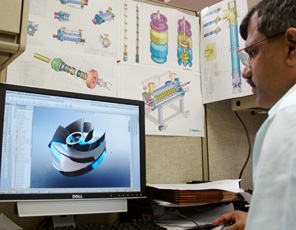
While many problems can be identified during a physical inspection of the pump when it is removed from service during either a planned or unplanned outage or turnaround, other more complex problems may require an extensive analysis of the pump and its system (driver, piping, foundation, change in application, operations and so on).
Hydro has the experience and resources to perform such engineering studies or to participate as part of a consulting engineering team to analyze complex pump and system problems.
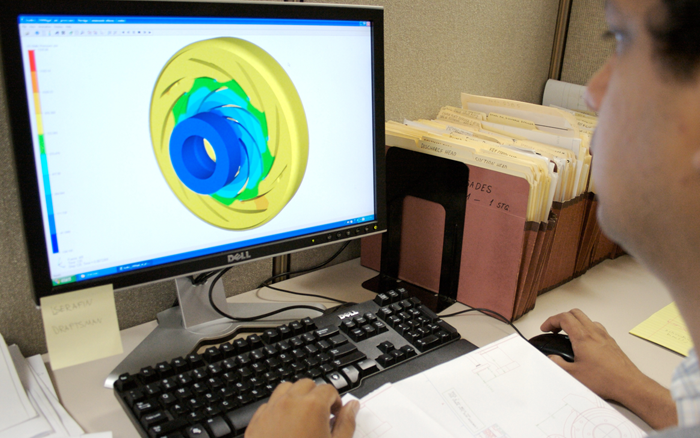
Hydro has diversified and in-depth pump knowledge that we believe is unique in our industry. While OEM’s traditionally focused on repairing their own equipment, Hydro has from the outset developed a knowledge base that includes experience across a broad spectrum of pump manufacturers and pump designs.
We realized that as an independent company, we had the unique capability of understanding the different designs and materials employed by various OEM’s as well as their successes or failures in specific applications and operating environments. Based on this data, Hydro was in an excellent position to improve OEM designs for their intended service.
Our high rate of repeat business is a testimonial to the performance improvements that Hydro has been able to achieve.
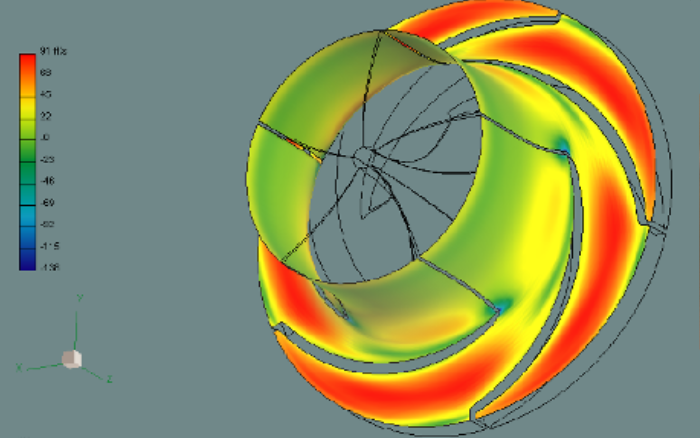
Hydro is one of the only independent pump rebuilding companies with the in-house capability and experience to perform hydraulic design modifications and upgrades.
Many of the engineered pumps in operation today were designed and manufactured 30-40 years ago. Due to an increase in energy demand, these pumps are operating at higher flows, farther from their best efficiency point. As a result, the original impeller design and its hydraulic characteristics many no longer be as effective for the plant’s new requirements.
Hydro utilizes advanced hydraulic design software at its service centers to analyze and optimize a pump’s hydraulic performance, enabling us to develop and test new impeller designs in a much shorter time period that previous methods allowed. With a proven track record and 40 year history, we have an extensive drawing database and library with proven reverse engineered drawings.
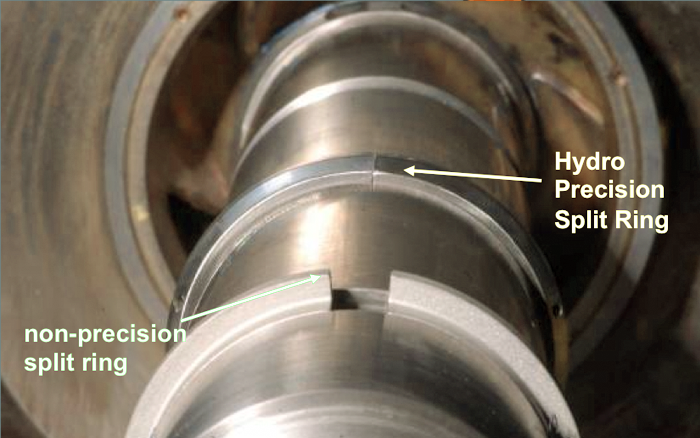
Improving fits and tolerances can reduce pump vibration and extend a pump's mean time between repairs. Hydro will evaluate your individual pump to determine the possible benefits to be gained from a mechanical upgrade. Mechanical upgrades can be performed to reduce vibration, increase bearing and seal life, or reduce power consumption.
Our engineers review the design of your pump, check the existing geometry and make recommendations to change any of the variables which can affect your pump's strength and ability to meet performance requirements. Examples of mechanical upgrades include:
- Precision split rings
- Interference fits
- Establishing concentricities
- Establishing perpendicularities
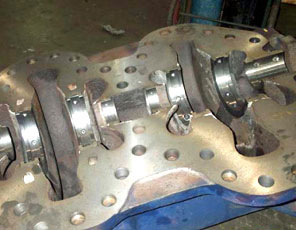
An upgrade or change in metallurgy can extend a pump’s mean time between repairs. Hydro's engineering team will evaluate the metallurgy of your pump components and recommend material upgrades specific to your pump’s application.
Upgrades in metallurgy can:
- Improve a pump’s ability to withstand the corrosive or erosive effects of the liquid being pumped.
- Improve a component’s tensile strength and prevent premature failure.
- Improve a pump’s performance through reduced running clearances.
- Prevent pump seizures during dry run events.
Take advantage of the new technologies that have been developed since the time your pump was designed and manufactured. Review of a pump’s metallurgy can be an important part of developing a repair plan.

In addition to traditional metals, a range of composite materials is available; each of which address specific issues such as corrosion, erosion, clearances, and run-dry events.
One upgrade that Hydro often recommends is using composite materials for wear parts. By applying the appropriate material for the specific application, running clearances can be reduced as much as 50%. Tighter clearances result in a reduction of internal recirculation, providing equal flow with less horsepower. The reduction in horsepower in turn results in improved efficiency and reduced energy costs.
Some composite materials have a low coefficient of friction making them an ideal selection for pumps that occasionally run dry. When a run dry event occurs, metal wear parts can gall and seize the pumps. The non-galling characteristics of some composite materials are proven to result in longer run times and safer pump operation.
